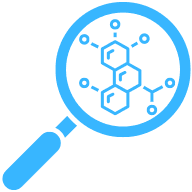Welcome to a deep dive into the world of big data and its transformative role in biostatistics. This blog post aims to explore the myriad ways in which big data applications are revolutionizing the field of biostatistics, driving research, and shaping our understanding of health and disease. From predictive modeling to genomic analysis, big data is the powerful tool that is reshaping the landscape of biostatistics.
The Convergence of Big Data and Biostatistics
Big data and biostatistics are two fields that have become increasingly intertwined. Biostatistics, a discipline that applies statistical methods to biological phenomena, has found a powerful ally in big data. The sheer volume, velocity, and variety of data generated in the biological sciences have necessitated the use of big data analytics.
Big data applications in biostatistics are manifold. They range from genomic analysis and predictive modeling to public health surveillance and clinical trials. The use of big data in these areas has not only enhanced the accuracy and efficiency of statistical analysis but also opened up new avenues for research and discovery.
One of the key areas where big data has made a significant impact is in genomic analysis. The advent of high-throughput sequencing technologies has led to the generation of vast amounts of genomic data. Analyzing this data requires sophisticated statistical methods and computational tools, which is where big data comes into play.
Big Data in Genomic Analysis
Genomic analysis is a field that has been revolutionized by big data. The ability to sequence entire genomes quickly and cheaply has led to an explosion of data. This data, when analyzed using big data techniques, can provide insights into the genetic basis of disease, help identify potential drug targets, and even predict an individual's risk of developing certain diseases.
Big data applications in genomic analysis include the use of machine learning algorithms to identify patterns and associations in genetic data. These algorithms can sift through vast amounts of data to identify genetic variants associated with disease, helping to pinpoint potential drug targets.
Another application is in the field of personalized medicine. By analyzing a patient's genomic data, doctors can tailor treatments to the individual, improving outcomes and reducing side effects. This is only possible due to the power of big data analytics.
Predictive Modeling and Big Data
Predictive modeling is another area where big data has made a significant impact. This involves using statistical techniques to predict future outcomes based on historical data. In the context of biostatistics, predictive modeling can be used to predict disease outbreaks, patient outcomes, and healthcare trends.
Big data applications in predictive modeling include the use of machine learning algorithms to analyze large datasets and make predictions. These algorithms can identify patterns and trends in the data that may not be apparent to human analysts.
For example, predictive modeling can be used to forecast disease outbreaks. By analyzing data on disease incidence, environmental factors, and population demographics, predictive models can forecast where and when an outbreak is likely to occur. This can help public health officials to prepare and respond more effectively.
Big Data in Public Health Surveillance
Public health surveillance is another area where big data is making a significant impact. Surveillance involves the ongoing collection, analysis, and interpretation of health-related data. This data is used to plan, implement, and evaluate public health practice.
Big data applications in public health surveillance include the use of social media data to track disease outbreaks, the analysis of electronic health records to identify health trends, and the use of mobile health apps to collect data on individual health behaviors.
For example, during the COVID-19 pandemic, big data analytics were used to track the spread of the virus, predict the impact of interventions, and monitor the effectiveness of vaccination campaigns. This would not have been possible without the power of big data.
Clinical Trials and Big Data
Clinical trials are a crucial part of medical research, and big data is playing an increasingly important role in their design and execution. By analyzing large datasets, researchers can identify potential participants, monitor patient outcomes, and evaluate the effectiveness of treatments.
Big data applications in clinical trials include the use of electronic health records to identify potential trial participants, the analysis of genomic data to tailor treatments to individual patients, and the use of machine learning algorithms to analyze trial data.
For example, big data analytics can be used to identify patients who are likely to respond to a particular treatment. This can help to improve patient outcomes and reduce the cost of clinical trials.
The Future of Big Data in Biostatistics
The future of big data in biostatistics looks bright. As technology continues to advance, the volume and variety of data available for analysis will only increase. This will open up new opportunities for research and discovery.
Big data will continue to play a crucial role in genomic analysis, predictive modeling, public health surveillance, and clinical trials. It will also open up new avenues for research, such as the use of artificial intelligence in biostatistics.
In conclusion, big data is transforming the field of biostatistics. It is driving research, shaping our understanding of health and disease, and improving patient outcomes. The future of biostatistics is big data, and the possibilities are endless.
Wrapping Up: Big Data's Transformative Role in Biostatistics
As we've explored, big data applications are reshaping the field of biostatistics, driving innovation, and enhancing our understanding of complex biological phenomena. From genomic analysis to predictive modeling, public health surveillance to clinical trials, big data is the powerful tool that is revolutionizing biostatistics. As we look to the future, the role of big data in biostatistics will only grow, opening up new avenues for research and discovery.

